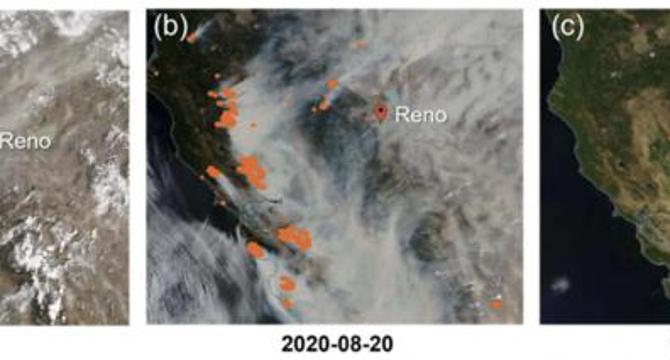Bioengineer
1w
76

Image Credit: Bioengineer
New Study Examines the Impact of Wildfire Smoke on Air Quality
- A recent study by the Desert Research Institute investigated the impact of wildfire aerosols on air quality and climate in the Western United States.
- The study monitored air quality in Reno, Nevada during smoky and clear days, attributing a 56-65% increase in fine particulate matter (PM2.5) to wildfire smoke.
- Researchers utilized advanced aerosol sizing instruments and EPA monitoring stations to quantify pollutants like carbon monoxide and potassium during wildfires.
- Satellite imagery and back-trajectory modeling confirmed the link between pollution enhancements and wildfire smoke in the Reno area.
- Wildfire aerosols have complex climatic impacts, influencing cloud nucleation, albedo, and precipitation dynamics.
- Exposure to wildfire smoke poses health risks due to elevated carbon monoxide levels and fine particulate matter deposition in the respiratory system.
- The research team developed a method to differentiate wildfire smoke aerosols from urban pollution sources using various data sources, aiding broader applicability.
- Future efforts include the use of machine learning for automated smoke detection in air quality datasets, enhancing real-time monitoring and public health responses.
- Understanding wildfire aerosols is crucial for refining air quality standards, developing filtration technologies, and improving climate models to address escalating wildfire incidents.
- This study underscores the importance of rigorous scientific inquiry in safeguarding environmental and human health amidst increasing wildfire intensity and duration.
- The research contributes valuable insights for policy-making, public health advisories, and community resilience strategies in the face of evolving wildfire challenges.
Read Full Article
4 Likes
For uninterrupted reading, download the app